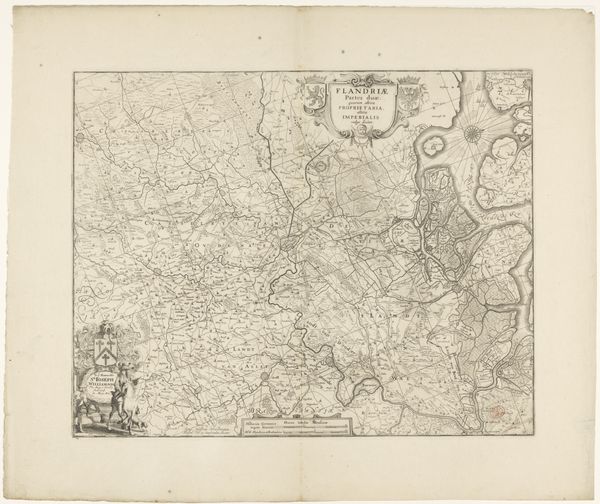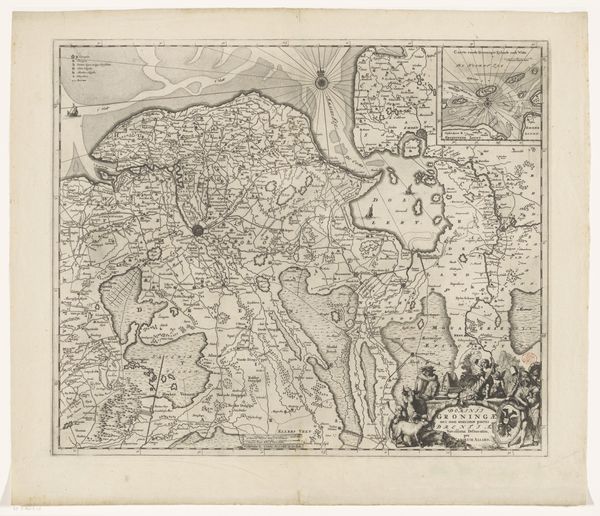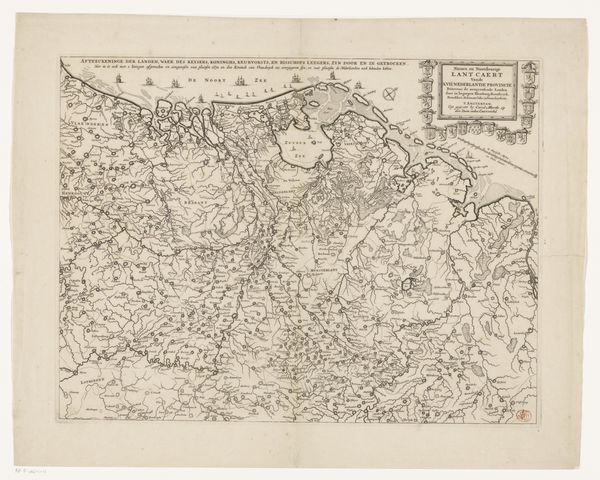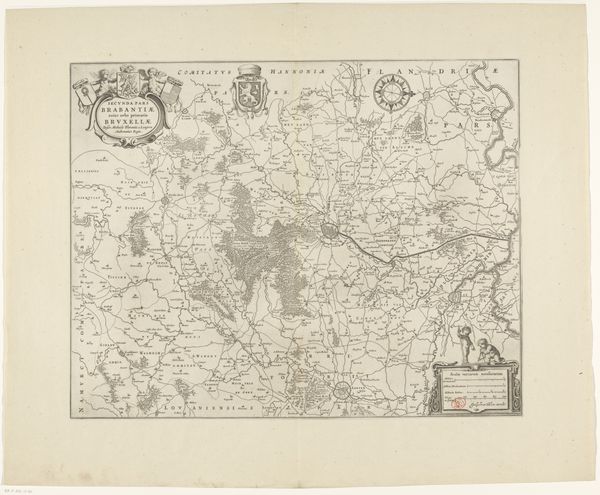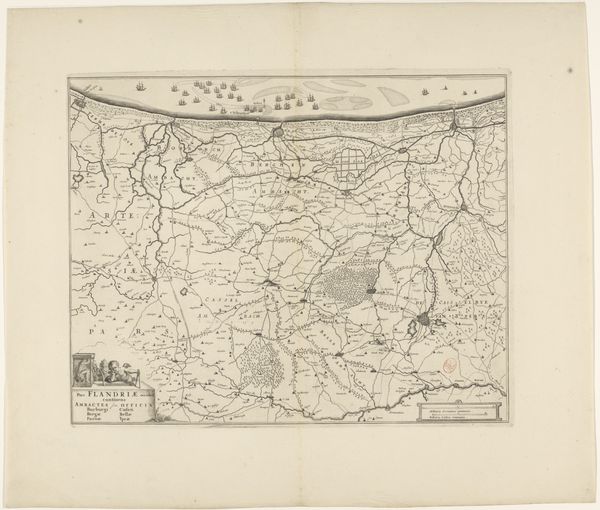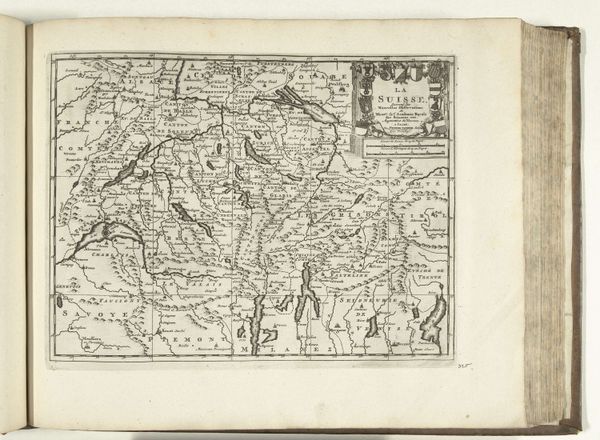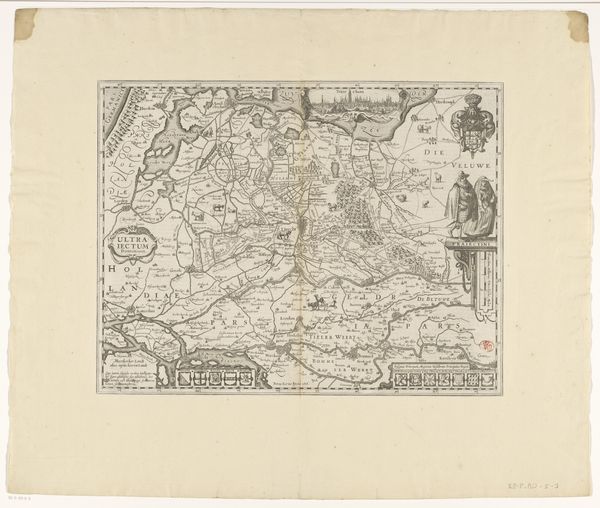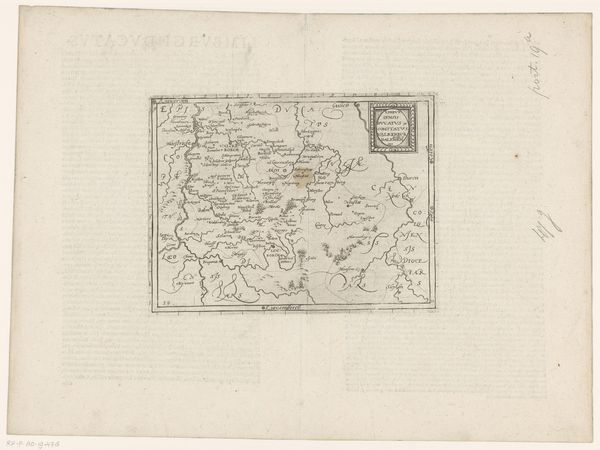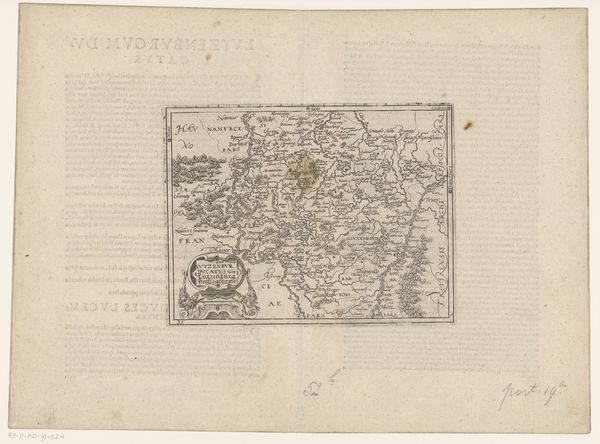
drawing, print, ink, engraving
#
drawing
#
pen drawing
# print
#
pen sketch
#
11_renaissance
#
ink
#
geometric
#
engraving
Dimensions: height 219 mm, width 316 mm
Copyright: Rijks Museum: Open Domain
Curator: This detailed map, titled "Kaart van Brabant," comes to us from sometime between 1624 and 1648. It’s currently held at the Rijksmuseum. What's your first impression? Editor: Immediate chaos, but somehow organized chaos! It's like trying to read a city’s subconscious – every tiny scribble a hidden anxiety. But I’m drawn to its intensity, a real journey packed onto a single page. Curator: Absolutely. Maps like this are fascinating cultural artifacts. Beyond mere geography, they reveal how a society perceived itself and its place in the world. The sheer density speaks to Brabant's importance, doesn’t it? Editor: It’s like a coded diary entry! The hand-drawn quality is gripping. Were the clusters of marks artistic flourishes, or representative of... forests maybe? There are so many different line weights creating micro-climates of importance. Curator: Very perceptive. The marks you see probably denote settlements and topographies – forests, hills, cities. The way these features are drawn provides insights into what was valued – trade routes, strategic locations, religious centers. Even the ornate cartouche adds to this sense of symbolic declaration. Editor: Yes! And that little compass rose, nudging ‘Occidens’, or west. What I find evocative about the use of the Latin here, combined with these miniature renderings of reality is how it brings into view a time when the known world felt very different. I see an urge to both know a place intimately and, strangely, contain it on one page! It makes me wonder if the places in our minds are sometimes even more evocative, or powerful, than their ‘actual’ coordinates. Curator: Exactly. It also brings up questions about ownership and control. Map-making in this era was rarely neutral; it served political and economic interests, reinforcing claims to territory and resources. Consider how this piece could reinforce regional or even religious identities and loyalties. Editor: Absolutely, like pinning down a butterfly—beautiful and deadly, capturing it for admiration, yet simultaneously stilling it, transforming it to ‘specimen.’ And I do enjoy those borders - like little doorways for giants! What was once real rendered into diagram, making it something between document and dream. Thank you. Curator: Indeed, its enduring power lies in its blend of precision and artistic license, prompting us to imagine the world through a 17th-century lens. A wonderful way to look back.
Comments
No comments
Be the first to comment and join the conversation on the ultimate creative platform.
